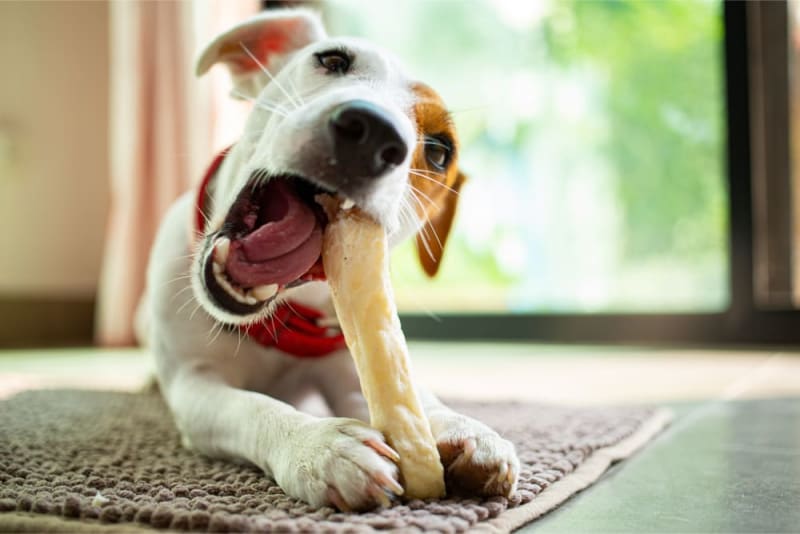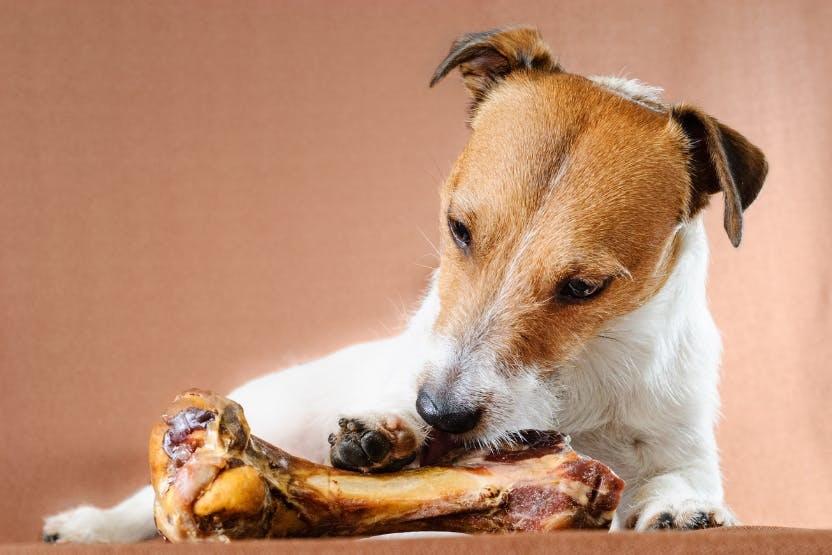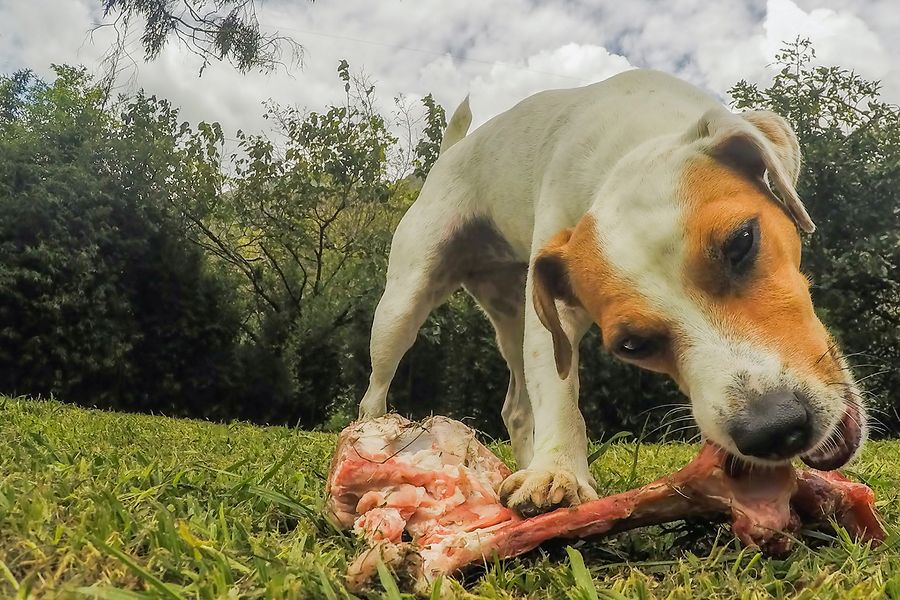Pet owners often wonder, “Can dogs have lamb bones?” The answer isn’t straightforward, as it involves considering both the potential benefits and risks. Lamb bones, like those from other meats, can provide dogs with both nutritional value and dental health benefits. However, it’s crucial to differentiate between raw and cooked lamb bones, as their safety for dogs significantly differs.
Understanding Dog Nutrition and Bone Safety
Dogs are natural carnivores, and their diet has evolved to include a variety of nutrients found in animal tissues, including bones. Bones provide not only nutritional benefits, such as calcium and phosphorus, but also serve as a means to fulfill a dog’s instinctual need to chew. However, safety concerns arise with certain types of bones, particularly those that are prone to splintering, which can pose serious health risks.
Lamb Bones: Safe or Not?

When it comes to feeding your dog lamb bones, understanding the nuances between raw and cooked bones, alongside their benefits and potential risks, is key to ensuring your dog enjoys their chew safely and healthily.
Types of Lamb Bones: Raw vs. Cooked
Raw Lamb Bones
- Safer Option: Generally, raw lamb bones are considered a safer option for dogs. Their softer texture reduces the risk of splintering.
- Nutritional Benefits: Raw bones contain nutrients essential for a dog’s health, including calcium, phosphorus, and bone marrow, which can contribute positively to their diet.
Cooked Lamb Bones
- Increased Risk of Splintering: The cooking process alters the structure of lamb bones, making them brittle and more likely to splinter, which can pose serious health risks to dogs.
- Avoid for Safety: Given their tendency to break into sharp pieces, cooked lamb bones can cause internal injuries or blockages in dogs, and are best avoided.
Understanding the Benefits
Feeding your dog lamb bones, especially raw ones, can have several benefits when done cautiously:
- Nutritional Value: Lamb bones are a source of minerals like calcium and phosphorus, crucial for maintaining strong bones and teeth. The marrow within the bones also offers fats and nutrients that are beneficial to a dog’s diet.
- Dental Health: The act of chewing on bones can help reduce plaque and tartar buildup on your dog’s teeth, promoting overall oral hygiene. It also encourages jaw strength through the natural action of gnawing.
Read More: Bubble theory dog training
Navigating the Risks
Despite the benefits, it’s important to be aware of the potential hazards that lamb bones, particularly cooked ones, can present:
- Choking Hazard: There’s a risk of bones getting lodged in the throat, especially if the size of the bone isn’t appropriate for the dog’s size and breed.
- Splintering Dangers: Cooked bones can splinter into sharp fragments, risking cuts or punctures in the mouth, throat, or digestive tract, which could lead to serious health complications.
- Intestinal Blockage: Large bone fragments can obstruct the digestive system, potentially requiring surgical intervention to resolve.
- Nutritional Imbalance: Excessive reliance on bones as a treat can disrupt the balance of nutrients in your dog’s diet, sidelining other vital ingredients.
Given these considerations, the decision to include lamb bones in your dog’s diet should be made with care. Raw lamb bones, chosen and supervised correctly, can offer benefits. However, the risks, especially those associated with cooked bones, necessitate a cautious approach. Ensuring that any bone given is an appropriate size for your dog and that chewing is closely monitored can help mitigate potential dangers. Always prioritize your dog’s safety and health, consulting with a veterinarian to tailor dietary choices to your dog’s specific needs and health status.
Safe Practices for Feeding Lamb Bones to Dogs

Ensuring your dog enjoys lamb bones safely requires adherence to specific practices that mitigate the associated risks:
- Right Size and Type: Select lamb bones that are appropriate for your dog’s size. Larger dogs can handle bigger bones, while smaller breeds should have bones that are size-appropriate to prevent choking hazards.
- Supervision is Key: Never leave your dog unattended while they are chewing on a bone. Supervision allows you to intervene quickly if your dog starts to choke or if pieces break off that could cause harm.
- Moderation: Lamb bones should be treated as an occasional treat, not a regular part of your dog’s diet. This helps prevent potential nutritional imbalances and ensures that bones supplement rather than replace a well-rounded diet.
- Freshness: Always provide fresh raw bones and avoid bones that have been sitting out and may have begun to spoil. Spoiled bones can harbor harmful bacteria, posing a risk to your dog’s health.
Alternatives to Lamb Bones
Considering the risks associated with feeding lamb bones to dogs, exploring safer alternatives can provide the chewing satisfaction dogs crave without the potential for harm:
- High-Quality Chew Toys: Durable chew toys made from rubber or nylon are designed to withstand heavy chewing while posing no risk of splintering.
- Dental Chews and Treats: Many products are specifically formulated to promote dental health, helping to clean teeth and freshen breath through the mechanical action of chewing.
- Natural Chews: Options like bully sticks, tendons, or specially prepared rawhide chews offer a safer alternative to bones. These are digestible and less likely to cause obstruction or splintering.
Read More: Whistle Training For Dogs
When to Consult a Veterinarian
Recognizing when to seek professional advice is crucial in preventing or addressing potential complications from bone chewing:
- Signs of Distress: If your dog shows signs of choking, gastrointestinal distress (such as vomiting, diarrhea, or constipation), or any form of discomfort after chewing on a bone, it’s time to consult your vet.
- Dietary Advice: Before introducing lamb bones or any new treat into your dog’s diet, a consultation with your vet can provide personalized advice based on your dog’s health, dietary needs, and size.
- Emergency Situations: In cases where you suspect your dog has ingested bone fragments that could cause internal blockages or injuries, immediate veterinary attention is necessary.
Incorporating lamb bones into your dog’s diet can be done safely with careful consideration and adherence to recommended practices. However, recognizing the potential risks and knowing safer alternatives can ensure your furry friend enjoys their treats without compromising their health. Always prioritize your dog’s safety and well-being by consulting with a veterinarian to make informed decisions about their diet and care.
Conclusion
Feeding lamb bones to dogs can offer benefits but comes with risks that must be carefully managed. By choosing the right bones, supervising chew sessions, and being mindful of frequency and quantity, pet owners can help ensure their dogs enjoy their bones safely. Remember, when in doubt, always consult a veterinarian to make the best decisions for your pet’s health.

